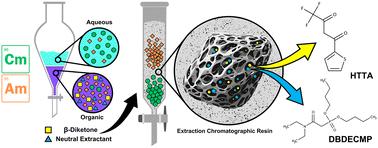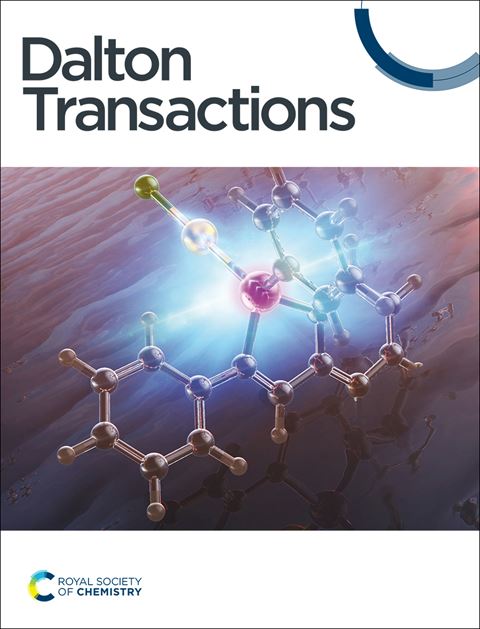The synergic effect of neutral organophosphorus ligands combined with acidic β-diketones for the extraction and separation of trivalent actinides
IF 3.5
3区 化学
Q2 CHEMISTRY, INORGANIC & NUCLEAR
引用次数: 0
Abstract
Separating trivalent f-block elements remains a central challenge due to their similar ionic radii and chemical behaviors. Historically, these separations have been achieved using single extractants, either alone or in combination with ion exchange chromatography. However, recent studies, including this work, have explored the potential of using synergic combinations of multiple extractants to enhance extraction and separation efficiencies for trivalent actinide separations. This study investigated synergic solvent extraction (SX) systems for extracting and separating americium and curium using three neutral organophosphorus ligands: octyl (phenyl)-N,N-diisobutylcarbamoylmethylphosphine (CMPO), dibutyl N,N-diethylcarbamylmethylenephosphonate (DBDECMP), and dihexyl N,N-diethylcarbamylmethylenephosphonate (DHDECMP), combined with either 2-thenoyltrifluoroacetone (HTTA, pKa = 6.25) or 4-benzoyl-3-methyl-1-phenyl-2-pyrazolin-5-one (HP, pKa = 3.95). Distribution ratios (D) were determined for 241Am3+ and 242Cm3+ as functions of nitric acid pH using 1,2-dichloroethane as the solvent. The combination of these ligands resulted in varying degrees of synergy as demonstrated by their synergic extraction enhancement coefficients (SEC). A maximum separation factor (SFAm/Cm) of 2.65 ± 0.21 was achieved with 0.05 M HTTA and 0.05 M DBDECMP at pH 2.50. This extractant combination was impregnated into an inert macroporous support at various ligand ratios using rotary evaporator methods to produce novel extraction chromatographic (EXC) resins. Various parameters affecting the adsorption of 241Am3+ and 242Cm3+ onto EXC resins, such as solution pH, ionic strength, contact time, γ-irradiation dose, and temperature, were studied. Metal extraction and synergism were retained upon conversion to EXC resins, with increasing extraction observed at higher pH levels. Thermodynamic studies showed increased adsorption and decreased Gibbs free energy (ΔG) with rising temperature. Kinetic investigations indicated rapid and consistent uptake after 10 minutes. The EXC resins exhibited excellent metal retention in preliminary column experiments, demonstrating a promising potential to separate americium and curium with a maximum decontamination factor of 88. Overall, this work successfully demonstrated the identification and conversion of synergic SX systems into novel synergic EXC resins for adjacent trivalent actinide separations.

求助全文
约1分钟内获得全文
求助全文
来源期刊

Dalton Transactions
化学-无机化学与核化学
CiteScore
6.60
自引率
7.50%
发文量
1832
审稿时长
1.5 months
期刊介绍:
Dalton Transactions is a journal for all areas of inorganic chemistry, which encompasses the organometallic, bioinorganic and materials chemistry of the elements, with applications including synthesis, catalysis, energy conversion/storage, electrical devices and medicine. Dalton Transactions welcomes high-quality, original submissions in all of these areas and more, where the advancement of knowledge in inorganic chemistry is significant.
 求助内容:
求助内容: 应助结果提醒方式:
应助结果提醒方式:


